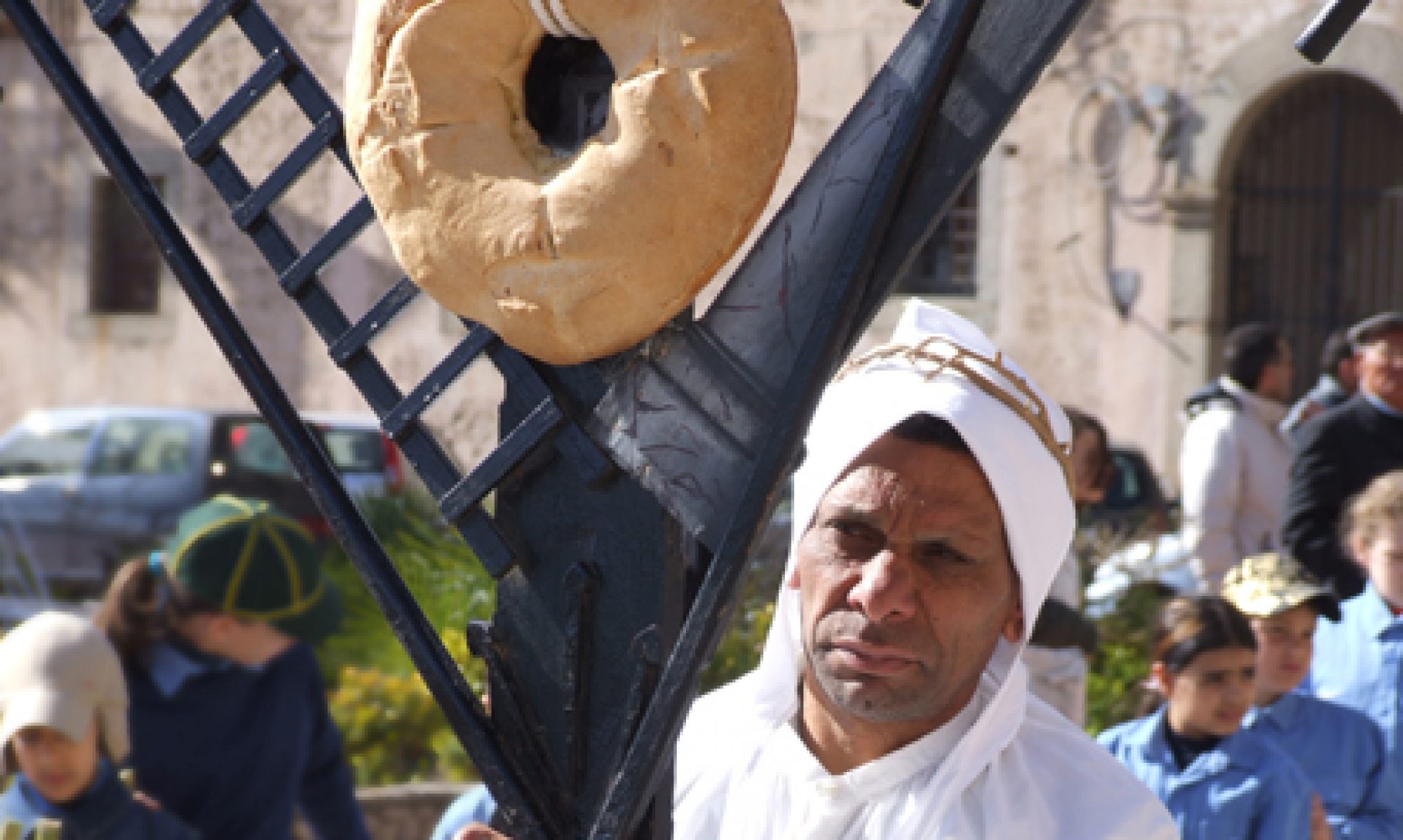Stilo, in the Locride
To the north of the locride, in the hinterland 10 km from the joniasea, on the slopes of mount Consolino we find Stilo.
Founded between the 7th and 8th centuries by the exodates of ancient Kaulonia, the inhabitants gave the new name to the new center. The town quickly became an important centre of basilian monasticism, and later went on to become an important outpost for the Byzantine Empire thank to is strategic location. It whithstood numerous attack by the normans, by whom it was ultimately conquered in the year 1071.
The castle of Stilo
The castle perched upon mount Consolino, which served as an important stronghold against enemy invasion, was also likely built during this same period. Having undergone various modifications under both Swabian and Angevin rule, the castle was severely damaged in 1520 and was ultimately demolished by the earthquake of 1783, which also destroyed a large portion of the town’s historic centre.
All that remains are a few wall fragments and the ruins of the cylindrical bastions. In recent years the castle has undergone restoration and reconstruction, after centuries the castle of Stilo returns imposing to lose shape and ownership of the surrounding area.
The centre of Stilo
On Via Campanella, visitors can find monument sculpted by Ernesto Gazzeri (ca 1926) dedicated to Tommaso Campanella himself (1568-1639), who was born in the nearby town of Stignano (once a hamlet of Stilo).
The splendid cathedral, which stands in the centre of town, was buil upon the site of an early christian church during the 14th century and was almost entirely rebuilt in baroque style during the 1700s. Although little remains of its original architectural elements, visitors can still admire the remarkable stone portal flanked by a number of sculpture fragments. In particular, the two feet on pagan statue bear testimony to the decline of paganism in the wake of christianity.
The baroque style interior houses the splendid and imposing work by Battistello Caracciolo entitled la Madonna d’Ognissanti (our Lady of All Saints), as well as a wooden reliquary bust of Saint Vitus and an 18th century wooden Crucifx, found in the chapel of Saint George. A magnificent work of art attributed to Mattia Preti, depicting il Miracolo della Porziuncola (the Miracle of Porziuncola) was stolen in 1972 and is yet to be recovered. There also a splendid altar of the Holy sacrament (ca. 1742), which features intricate multi-coloured marble inlays.
The baroque church of San Francesco (Saint Francis) is also worth visiting, as it is home to a magnificent 16th century painting of the Madonna del Borgo ( our Lady of the Village ) by Salvo d’Antonio. Be sure to also visit the church of San Domenico (Saint Dominic) in the north part of the towns, whose ruined monastery once played host to Tommaso Campanella.
In the lower part of village, visitors can find the ruin of the church of Saint Nicholas of Tolentino, with its Greek cross layout, covered by a barrel vault and trullo dome. The town is also notoriously the home of one the greatest masterpieces of Byzantine architecture, the Cattolica of Stilo.
The greatest masterpieces of Byzantine architecture, the Cattolica of Stilo.
The Cattolica of Stilo having been constructed between the 10th and 11th century A.D., this church in reminiscent of a number sacred buildings found in Georgia, Armenia and Peloponnesus. Paolo Orsi is credited as the first to have recognized its value, and subsequently took steps to ensure its preservation by hightlight its various features.
The small church (measuring just 7.40 x 7.50 m.) as a square floor plan and an architrave entrance surmounted by a lunette, which forms the building’s southern facade.
The exterior is dominated by four cylindrical domes, symmetricaly arranged around a fifith central dome. Unlike the lateral ones, the central dome is adorned with two bands of diamonds just above the windows, made up of square terracotta plates of various colours arranged in a spiral pattern. It is the structure as a whole, however, that show a rather clever use of brick-work, to the point that it constitutes a rare example of architectural harmony and beauty.The three semicircular apse are illuminated by an equal number of mullioned windows. The ceiling vaults are supported by pillars from the Magna Graecia period taken from nearby archeological sites (Kaulonia).
the Cattolica of Stilo’s
According to legend, the Cattolica of Stilo’s four pillars were taken from the ruins of a pagan temple by four women from Stilo, who miraculously did not feel the enormous wheight of the marble pressing down upon their shoulders.
Their bases are comprised of inverted Corinthian capitals. The Greek inscription on the first pillar means: God is the Lord that appeared to us.
The remains of the frescoes are certainly worthy of mention: the figure of a saint in bishop’s vestment (perhaps Saint Nicholas) is shown on the left, in the act of performing a blessing.
The wall on the right shows St. John Chrysostom and St.Basil the great.
In the vault, one can scarcely make out the image of Christ Enthroned and blessing, while the figure of another saint can be found on the left hand side of the rigth apse.
the Byzantine world
While the domes of the Cattolica of Stilo are reminescent of the church of San Marco in Rossano and that of San Pietro in Otranto, its structure is an example of cross-dormed architecture, which was quite common throughout the Byzantine world during the 11th and12th centuries A.D.
